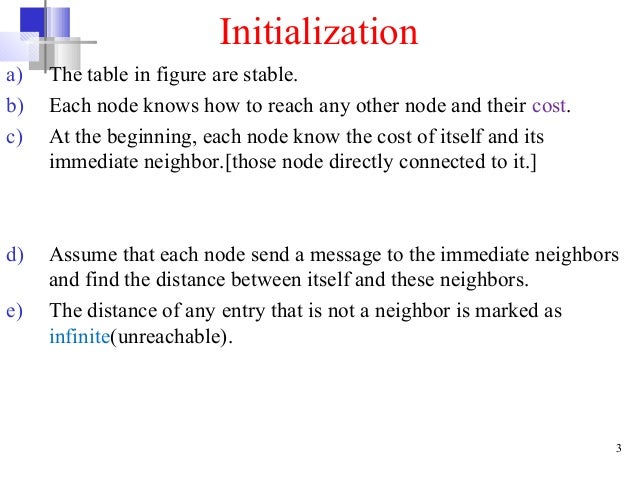

The basis of distance vector routing is designed on the working of the Bellman-Ford Algorithm. Algorithm Applied in Distance Vector Routing.GitHub - alvin-yang68/Link-State-Routing: Networking protocol in C++ In this table, the router updates the lower cost for A and C by updating the new weight from 4 to 3 in router A and from 4 to 3 in router C.Link state routing protocol program in c++ Link State Routing Algorithm Scaler Topics Step 2 − If the path via a neighbor has a lower cost, then the router updates its local table to forward packets to the neighbor. For example, A will share its routing table with neighbors B and C and neighbors B and C will share their routing table with A. Step 1 − In this DVR network, each router shares its routing table with every neighbor. In the network shown below, there are three routers, A, B, and C, with the following weights − AB =2, BC =3 and CA =5.

If the path via the neighbor has a lower cost, then the router updates its local table to forward packets to the neighbor.Įxample − Distance Vector Router Protocol.It compares the delay in its local table with the delay in the neighbor’s table and the cost of reaching that neighbor.Routers periodically exchange routing tables with each of their neighbors.Each router knows the delay in reaching its neighbors (Ex − send echo request).Tables are updated by exchanging the information with the neighbor’s nodes.

It contains two parts − a preferred outgoing line to use for that destination and an estimate of time (delay). It contains only one entry for each router.

In DVR, each router maintains a routing table.Historically it is known as the old ARPNET routing algorithm or Bellman-Ford algorithm. In distance-vector routing (DVR), each router is required to inform the topology changes to its neighboring routers periodically.


 0 kommentar(er)
0 kommentar(er)
